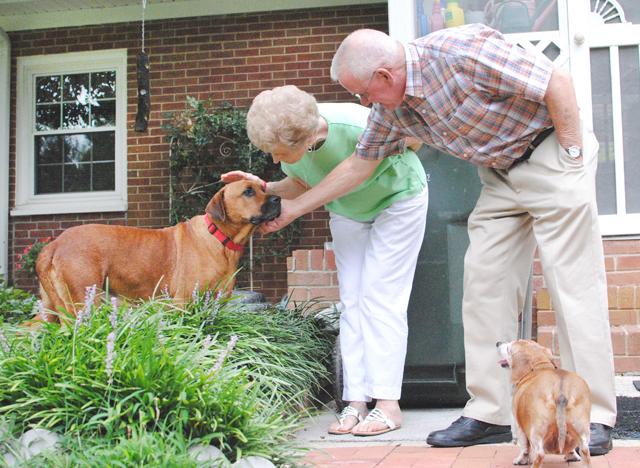Tornadoes, hurricanes and earthquakes can leave large numbers of people lacking the most basic necessities, but it’s not just people who suffer. Pets and animals of all sizes and kinds often get lost in the shuffle of community struggles as their owners seek aid.
The Department of Social Work and College of Veterinary Medicine hosted a collaborative symposium in March about the relationship between humans and animals.
“This was the beginning of a partnership that we plan to continue developing and expanding to enhance student success,” said Karen Bullock, associate department head of the Department of Social Work.
“The symposium is the first of what we hope to be a series of workshops and trainings to bring students, educators, practitioners and researchers together to lean an innovative cross between disciplines at N.C. State.”
According to Bullock, practicing the profession of social work includes the need to prepare graduates for an assortment of different challenges and settings.
“We are always concerned about the relationships of the people for whom we care,” Bullock said. “Our attention to human-animal relationships allows us to be even more effective with those individuals and families who have animals.”
Jeannine Moga, a clinical social worker specializing in human-animals relationships at the College of Veterinary Medicine, explained the many situations in which the relationship between humans and animals comes into play.
“A large scale example would be Hurricane Katrina,” Moga said. “Large numbers of people in an entire region weren’t able to evacuate because their animals could not be accommodated in evacuation processes.”
But the importance of relationships with domesticated animals is not exclusive to natural disasters.
“In an everyday situation this comes up for people in violent household,” Moga said. “They may wish to seek shelter but they can’t take their animals with them because shelters do not accept animals.”
According to Moga, people with pets are less likely to use community services than those without. Moga explained the relationship between humans and their animals has a great impact on personal health and well-being.
“Globally, we’re trying to get social work practitioners to start asking the questions about whether or not the people they serve have animals,” Moga said. “Starting to help these folks problem solve around those animals’ needs so they aren’t a barrier to service is key.”
Moga said there are two questions social work practitioners should ask: “Do you have any animals that you’re concerned about?” and “Do you have a pet at home who would prevent you from getting help for yourself?”
“From a social work perspective, it is essential to include animals in functional assessments of a patient or client’s ecosystem, all of which extends beyond simply the family but also includes the social environment of the person,” Bullock said.
Moga described an example of a household pet barrier in which an elderly person refuses to be hospitalized because there’s no one to care for his or her animal. Moga also said senior citizens will sometimes go without food and medication because they are more concerned about getting food and medication for their pets.
“That’s not a good position to be in,” Moga said. “As practitioners who are in the position of helping people in the community, we need to figure out a way in which we can put things in place to help people problem solve around barriers.”
According to Moga, two-thirds of American households have pets and there are many people who own pets and are in need of social services in the community.
“We have to start by asking,” Moga said. “We’re caring for the entire family. We can’t ignore a very important part of the family that might be consequential for those trying to be served.”
Both Moga and Bullock agreed the first step in crossing the barriers of human-animal relationships is a strong collaborative effort between the disciplines.
“Having a better understanding of [human-animal] relationships, through research and practice has multiple effects,” Bullock said. “This understanding can help advance the fields of social work and veterinary medicine as well as prepare graduates in each field.”
According to Moga and Bullock the impacts of interdisciplinary collaboration reach far beyond the classroom and the immediate community.
“The more we work together to meet common needs the more effective we’re going to be,” Moga said. “As this concept grows, more people will be helped.”








